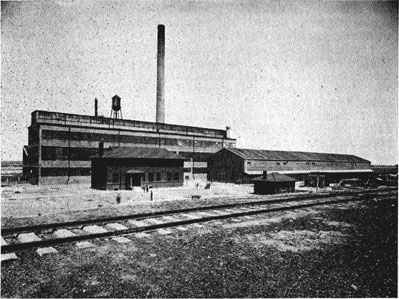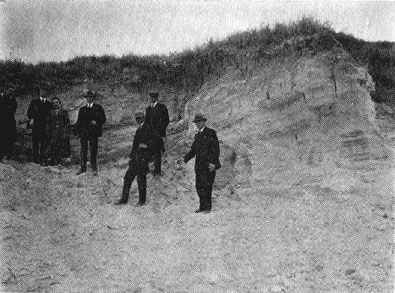![]()

Beet Sugar Factory at Gering, Nebr. little valleys are really better for grazing and hay purposes than for cultivation in agricultural crops. However, stretching far into what is commonly known as the "sandhills" are hundreds of thousands of acres of land that to date have been devoted to grazing and hay purposes, but which are capable of producing corn, wheat, oats, rye, barley, alfalfa, potatoes, sugar beets, melons and small fruits in abundance - equal, in fact, to the high priced lands in the eastern part of the state. Such land maybe found in Valley, Garfield, Wheeler, Holt, Rock and Brown counties in north-central Nebraska, and in Keith, Perkins, Deuel, Garden, Morrill, Kimball, Cheyenne, Banner, Box Butte. Sheridan, Sioux and Dawes counties in the western and northwestern section, Scottsbluff, Morrill, Garden, Keith and Lincoln counties in the west end, in addition to offering great opportunities for "dry land farming," offer exceptional opportunities for irrigation farming. The entire North Platte Valley is rapidly becoming one vast irrigated garden spot. Land not yet under irrigation, but which will be in good time, may be purchased at from $20 to $35 per acre, with a small payment down and the balance on long time. In many instances the land may be purchased with a very small initial payment to insure good faith, and the balance paid from an annual share of the crops produced. Wherever the land is now without irrigation, but will come under one of the government irrigation projects, the perpetual water right will cost $60 per acre, but the government allows twenty years in which to pay it, |
![]()
without interest on the deferred payments. The irrigated lands in the North Platte Valley are producing record-breaking crops of wheat, alfalfa, oats and sugar beets. The Great Western Sugar Co. has sugar mills at Scottsbluff, Gering and Bayard, with a total capacity of 4,000 tons of beets per day. The returns netted by beet raisers are highly satisfactory, averaging right around $65 an acre. But of course you can not cultivate as many acres of beets as you can of corn. Right now the federal government is constructing a huge irrigation canal in eastern Wyoming and western Nebraska that will irrigate about 200,000 acres in Nebraska, all on the south side of the North Platte river and in the counties of Scottsbluff and Morrill. Land that will be under this ditch may be purchased now for from $35 to $50 an acre. With the water right assured from the government the land will eventually represent an investment of from $95 to $110 an acre. Irrigated land not one bit better and in that same neighborhood is not for sale at $150 to $250 an acre. |
![]()
 |
 |
 |
© 2002 for the NEGenWeb Project by Pam Rietsch, Ted & Carole Miller
